2015 Yamaha Viper S-TX DX Review
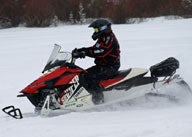
Blending Viper XTX DNA with high mile capabilities
When you check the off-trail offerings from Yamaha, you’ll notice that there is not a base Viper XTX model. There’s the pre-season limited edition Viper XTX LE and the in-season Viper XTX SE, but no base XTX. That’s simply because Yamaha marketing decided to add more pizzazz to the Viper line by creating more models and offering the “limited edition” and creating an all-new Viper S-TX DX for model year 2015.
Engine Type:Horizontal In-line
Cylinders:3
Engine Stroke:4-Stroke
Valve Configuration:DOHC
Displacement:1049 / 64
Starter:Electric
Turbocharged:No
View Full SpecBased on the fact that Yamaha offered a single Viper XTX in 2014, we’d have to guess that consumer interest in a Viper XTX model blew right by the concept of a “base” XTX in favor of a model with premium suspension parts, the “LE.” That left Yamaha with a chance to totally position what is essentially a tricked out “base” XTX as an entirely new model – the 2015 Viper S-TX DX. Smart marketing and quite clever as the new-for-2015 S-TX DX is only US$100 more than last season’s Viper XTX SE.
Let’s not mislead anyone into thinking that the 2015 Viper S-TX DX is a watered-down 2014 XTX SE. The two are quite different and intended for similar but quite different buyers. Where the XTX buyer wants a shock package for big bumps and berm blasting control, the S-TX DX rider dials back that kind of riding in favor of a bit more versatility. Hence, the appearance of a full-fledged, tunnel-mounted, designed-in rear cargo rack and use of easy-to-tune coil spring assisted gas shocks.
COMPARISON: Read our review of the 2014 Yamaha SR Viper XTX SE + Video
The S-TX DX is a different kind of XTX-based Viper that is perfect for the frequent and ever-changing snows of places like Michigan’s Upper Peninsula. We figure that the S-TX DX buyer is very comfortable in his own snowsuit, knows how to ride off trail, doesn’t feel a need to impress anyone with his abilities and simply prefers to manage long mileage days in all types of snow terrain. This S-TX DX rider knows exactly what he wants in a sled, most likely as result of having been riding for a decade-plus. Yes, they can fine tune the Float air shocks of the Viper XTX LE, but they know that their 200-plus mile riding day will be better suited with a solid all-around suspension setting to provide a good ride, handle on-trail chop and the deep-pocked trails they’ll find at the end of their riding day. They don’t want to stop every 50 miles and fine tune an air shock, they want to motor on from dawn past dusk, stopping to fill up the S-TX’ 10-gallon fuel tank and grab lunch at some trail side pit stop. These are serious riders who also have opted out of the two-stroke scene and opted into the world of four-stroke power.
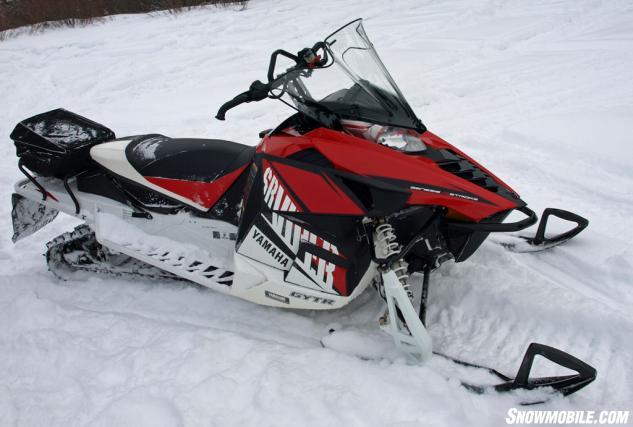 Yamaha’s new-for-2015 Viper S-TX DX is available in a choice of red or a black.
Yamaha’s new-for-2015 Viper S-TX DX is available in a choice of red or a black.
Chances are good that the S-TX DX buyer has had previous Yamahas. Until the Yamaha partnership with Arctic Cat, he didn’t like his options. Electric power steering couldn’t negate the weight issues and lack of Cat-like handling in Yamaha’s Apex, Vector or Nytro models. But Yamaha power in a sled with the known on- and off-trail prowess of a ProCross chassis? That makes a difference.
Why do we suspect that Yamaha Viper S-TX DX buyers had previous Yamaha models? If they knew little about Yamahas and the Yamaha reputation for standing behind their products meant nothing, we figure they’d choose the Arctic Cat XF 7000 CrossTour, which is essentially Cat’s version of the S-TX DX.
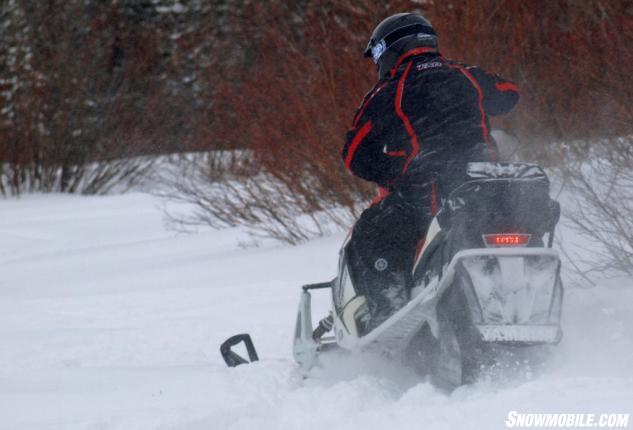 The added safety that LED brake and tail lighting offers can be seen in the snow fog.
The added safety that LED brake and tail lighting offers can be seen in the snow fog.
By choosing the Yamaha, S-TX DX buyers also get proprietary Yamaha clutching on the high-performance Genesis 1049cc three-cylinder. The Cat comes with Arctic Cat clutches. There is a difference, as Cat prefers more “free-wheeling” action when you lift off the throttle flipper and Yamaha clutching provides a hint of engine braking even though there is a built-in engine braking reduction system. In our opinion the Yamaha four-stroke seems to respond more smoothly with the Yamaha clutching.
COMPARISON: Read our review of the 2014 Arctic Cat XF 7000 CrossTour
Interestingly, Yamaha rates its engine at about 130 horsepower, while Arctic Cat claims 135 hp in its marketing materials for the CrossTour. Guess that helps separate the various Cat engines by horsepower brackets since Arctic Cat still uses a Suzuki-built four-stroke twin of 125-ish horsepower in some models along with its own direct-injection 600cc two-stroke also at a claimed 125-hp. Whatever the reality, the Yamaha triple provides excellent torque for smooth low end and midrange operation, exactly what you want for pushing through snow in areas where snowfalls are measured in feet and not inches!
You’ll also appreciate the taller 1.352-inch lug profile and extra length of the S-TX DX’ standard 141-inch track length, which gives it a bit more traction than the tamer more trail-oriented Viper LTX models. The LTX features a 137-inch length RipSaw II with 1.25-inch lug height. The S-TX DX gets a more aggressive Cobra track. The Viper XTX trumps them both with a taller 1.6-inch lug profile, making it best suited for riders who spend more time off-trail than on.
Interestingly all three sleds are based on Arctic Cat’s dual-ply aluminum ProCross XF-style platform, even though there are three slightly different suspensions housed in the tunnel. The LTX DX comes with the Dual Shock SR 137 suspension. Both the S-TX DX and XTX models use the Dual Shock SR 141, but the suspension shock setups vary. All three feature a rebuildable aluminum gas shock on the front arm. The S-TX DX and XTX models rely on a Fox Float 2 shock for rear arm control. Arctic Cat specifies a Fox Float 3 air shock for its XF 7000 Cross Tour model.
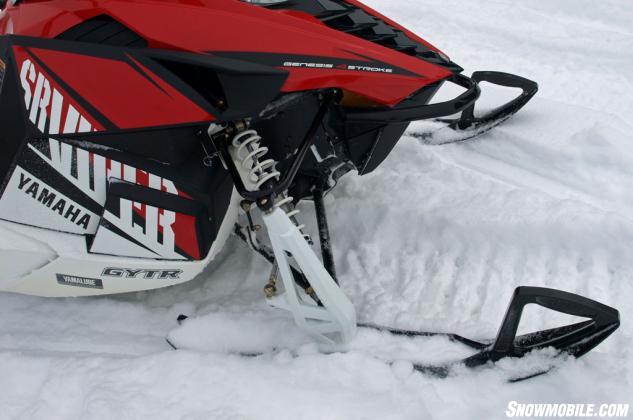 Rebuildable aluminum front shocks utilize the assistance of easy-adjust coil springs.
Rebuildable aluminum front shocks utilize the assistance of easy-adjust coil springs.
Yamaha adds enough “special” pieces to the S-TX DX to differentiate it from its XTX series. Obviously the front-end spring-assisted gas shocks make it stand apart from the air shock equipped XTX. We don’t see that as a big deal, especially when you add in the use of Yamaha’s own deep-keel Tuner skis, which were expressly designed for the Viper. Keeping with a sense of off-trail capabilities, Yamaha fitted the handlebar with a center strap to aid leveraging the sled in deep off-trail snow, plus the ski stance can be set from 42 to 43 inches in center-to-center width.
COMPARISON: Read our review of the 2015 Ski-Doo MXZ TNT ACE 900 + Video
While this sled mimics many aspects of the XTX series, the Viper S-TX DX is truly a unique model with a character all its own. Created as a marketing concept, the reality of the S-TX DX is of a very capable on- or off-trail sled that will appeal to long time Yamaha enthusiasts demanding exceptional all-around every day performance, regardless of the snow conditions. The Viper S-TX DX gains all the benefits of Yamaha’s famed four-stroke power – excellent torque, reliable and durable every day ride-ability, fuel efficiency, automotive-quality quiet and zero two-stroke after-ride odor! The fact that you get a rider-friendly cargo area, quality seating position, protective and tall windshield and limited one-year warranty is simply a nice benefit.
We figure that the more aggressive off-trail rider who likes to show off his sled’s equipment will prefer the XTX SE. The Viper S-TX DX should appeal to the rider with pretty much the same off-trail abilities, but who wants a sled more for himself than others. The S-TX DX makes a great sled for the serious high mileage rider who makes his statement via his odometer and not his heel-clicker riding style.
| 2015 Yamaha SR Viper S-TX DX Specs | |
| Engine | Yamaha Genesis three-cylinder, four-stroke high-performance 1049cc; bore/stroke of 82.0mm/66.2mm; liquid-cooled; liquid-heated 3x41mm throttle bodied electronic fuel injection system; dry sump lubrication |
| Horsepower | 130+ |
| Drive | Yamaha YVXC drive clutch with Yamaha driven; magnesium chaincase and cover |
| Front Suspension | Yamaha SRV tall A-arm with rebuildable HPG aluminum shocks; up to 10.0-in of travel; Yamaha Tuner skis |
| Rear Suspension | Yamaha Dual Shock SR 141 parallel slide rail; aluminum high pressure gas and Fox Float 2 shocks; up to 14.5-inches of travel |
| Brake | Hayes radial master cylinder hydraulic brake system with 8-inch disc mounted on drive shaft |
| Length | 125.0 in |
| Height | 46.5 in |
| Width | 48.0 in |
| Ski Stance | Adjustable 42-43 in |
| Track | 15 x 141 x 1.352 Camoplast Cobra |
| Weight | NA |
| Fuel Capacity | 10.0 Gal |
| Features | Heated seat (optional), rear storage bag, digital gauge, push button reverse, electric start; Yamaha Tuner skis |
| MSRP | US$13,099 – C$14,899 |



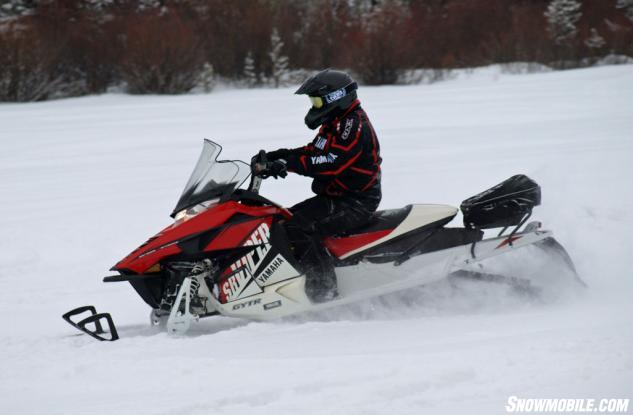
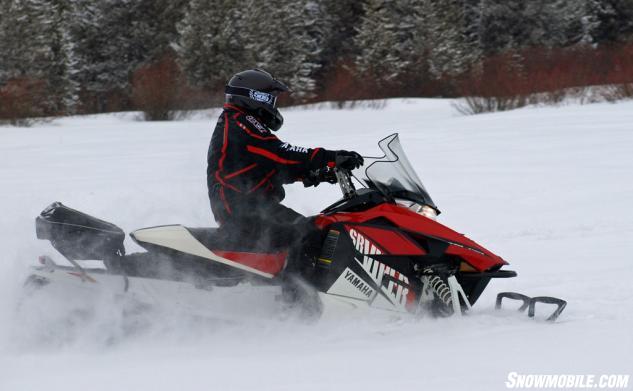
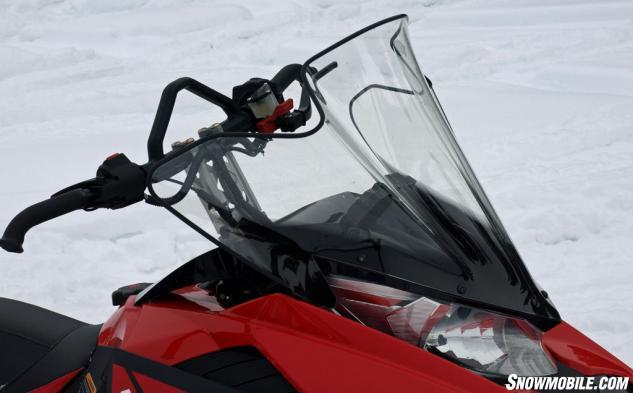





 Your Privacy Choices
Your Privacy Choices